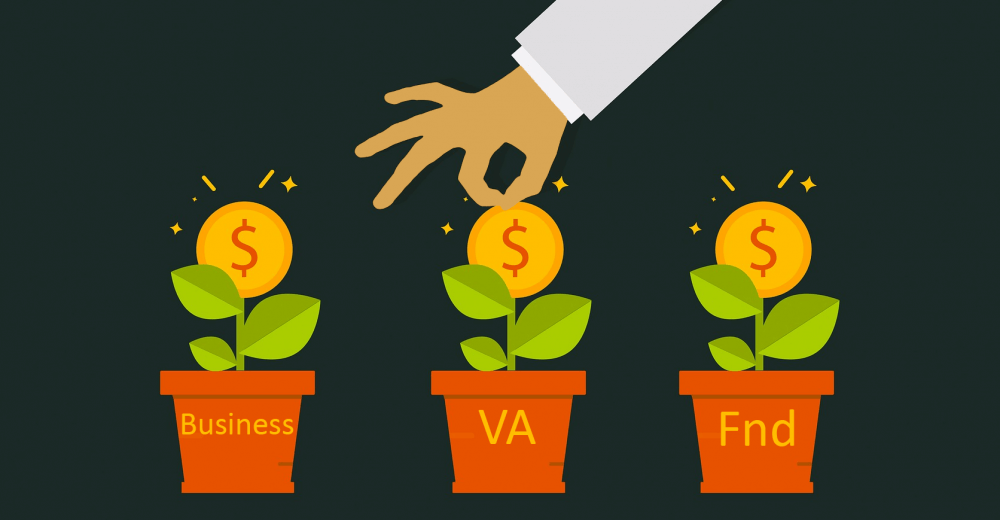 You might have noticed that industry funding has become a much more desirable part of a PI’s funding portfolio in 2025 than it has been in the past. VUMC’s Office of Sponsored Programs – Contracts Management department is here to help.
You might have noticed that industry funding has become a much more desirable part of a PI’s funding portfolio in 2025 than it has been in the past. VUMC’s Office of Sponsored Programs – Contracts Management department is here to help.
While each industry contract is unique, if you’ve never done a collaboration with industry before, here are the broad outlines.
Get Confidential
You’ve met a representative from Pfizer or a biotech startup at a conference, or they’ve reached out to you in email because they think you’re perfect for a collaboration. Before you share any unpublished data or other proprietary information, work with your department/division’s AO or grants manager to get a confidentiality agreement or non-disclosure agreement (also called a CDA or NDA) in place. This protects you and your work from being scooped.
Companies will usually have a draft agreement pre-written, but if they want VUMC to provide a draft, we have CDA templates suited for one-way or mutual sharing. Prior to having discussion with a company, you or your AO/grants manager should submit a CDA request in PEER. OSP turns CDAs around quickly, aiming to review and send comments within 24 hours, and then once agreed and signed, you’re good to set up a discussion to iron out the details of the proposed collaboration with the company.
Confidentiality agreements should be in place even for discussions of potential non-funded collaborations (e.g., a company plans to send you compound or you plan to send a company patient samples and no money is changing hands). If you’ll be discussing a multi-site project you developed, you should also have a confidentiality agreement with each potential site.
The Definitive Contract
Once you’ve hashed out what you want to do with the company under the CDA/NDA, it’s time to set up a definitive contract. You’ll again go through your AO or grants manager, although the industry contracts team at OSP loves to get questions from PIs at any point during the process, so don’t be afraid to go directly to them too. All contracts go through PEER.
To submit the definitive contract, you’ll need:
- A scope of work or protocol
- A budget or budget outline (similar to a grant budget)
- Either a draft agreement/contract from the company or permission from the company to have VUMC write the agreement.
For the common situation of VUMC being a trial site and providing patients for a clinical trial run by a drug company, the company will almost always give you their draft clinical trial agreement along with their trial protocol and proposed budget. OSP does have a CTA templates if the company permits VUMC to draft the agreement. (Add a comment to the PEER request to indicate that the company wants VUMC to draft the agreement.) For other situations, where the project idea originated with you alone or jointly with company and intellectual property belonging to you or you and the company jointly is likely to be generated, you’ll need to write the protocol or scope of work alone or jointly with the company.
This can sound intimidating, but for most purposes, they’re quite simple. An animal study is often only 1-3 pages, while other types of studies may be a bit longer. It needs to contain the following:
- Background. The research question and, broadly, how you plan to tackle it. Think of this as the specific aims.
- Resources each party is bringing to the table. What are you contributing to the project? Mouse models, patient enrollment, samples, software? Don’t forget: Your expertise is a resource! What is the company contributing?
- Materials. Will anything need be transferred between you and the company in order to conduct the project, and if so, what and how? (Data, samples, equipment, mice…)
- Performance obligations. Describe what each of you and the company will do and how you’ll do it. For example, you will perform an animal study under IACUC approval, and here’s a one-page description of how that study will be performed. Similarly, what will the company do and how will they do it? For example, the company will provide funding and its proprietary compound for you to test in your mouse model.
- Deliverables. Often includes progress reports and a final report, or other milestones. Indicates if you’ll jointly publish with the company or not.
- Budget. How you’re going to get paid. A common arrangement is for the company to provide 33% up front, 33% upon some sort of mid-point milestone, and 33% at completion, but other arrangements exist.
A common reason for contract requests in PEER to be kicked back to you for revision is not including something necessary from the list above, such as a Scope of Work. Your AO or grants manager probably has examples or template SOWs you can work from.
Once PEER request is accepted, the assigned analyst at OSP will carefully read the contract and make sure it’s fair to both parties. OPS aims to send comments to the other party in 1-4 days of assignment.
OSP works very closely with our Tech Transfer office to make sure intellectual property (IP) is attributed and any generated IP rights allocated fairly. The most common setup is that the company has the first option to get an exclusive license to your IP and pay a royalty, but otherwise VUMC owns what you create and the company owns their own creations.
Other Tips
Working with an international company is doable, but be aware there is an international approval process, which can be lengthy. If you are considering an international research project, please reach out to OSP managers early in the process to discuss details and what to expect.
Don’t forget VU is a separate legal entity from VUMC and that working with VU will also require a contract, the same as it would with any other university or institution. The contract pathway is easier to navigate because we do it so often.
Publication rights will be included in the contract. Depending on the type of collaboration, you and the company may publish jointly or separately, and one or the other may have the first right to publish.
Industry Contracts Managers Karen Bastarache and Jing Belfiglio love hearing from PIs and encourage you to come to them as early as possible in your collaboration process to make the contract process as seamless as possible. OSP-CM’s general inbox for all OSP-CM questions, research.contracts@vumc.org, is monitored every day.

